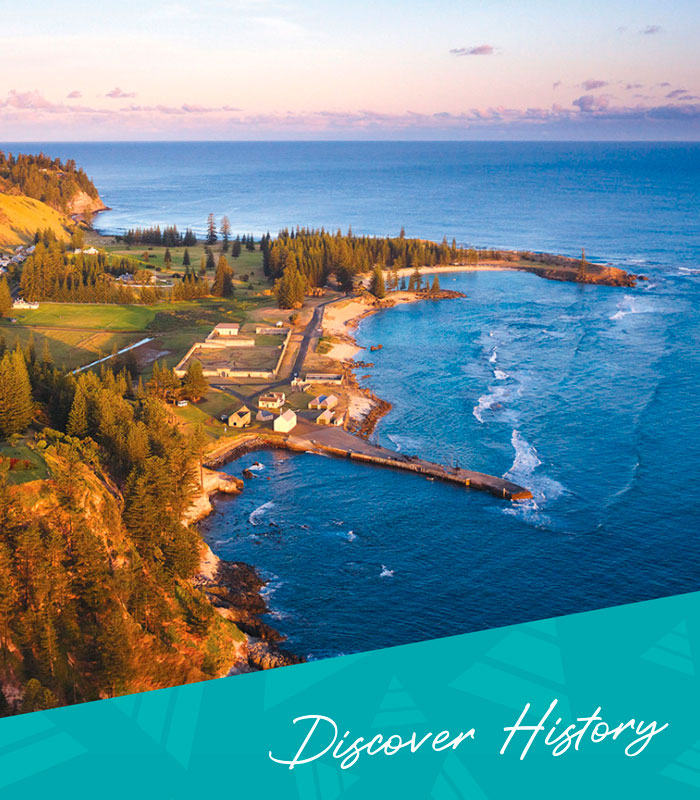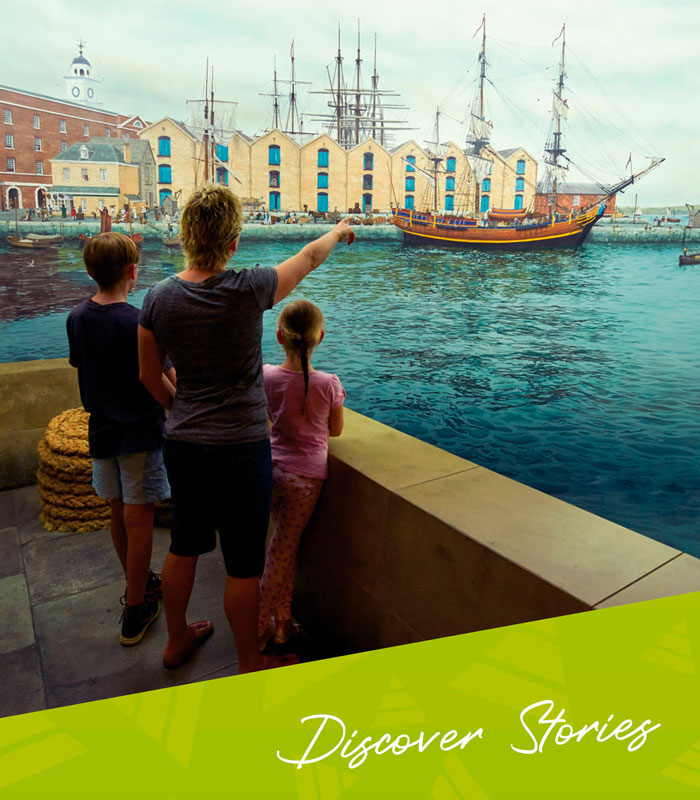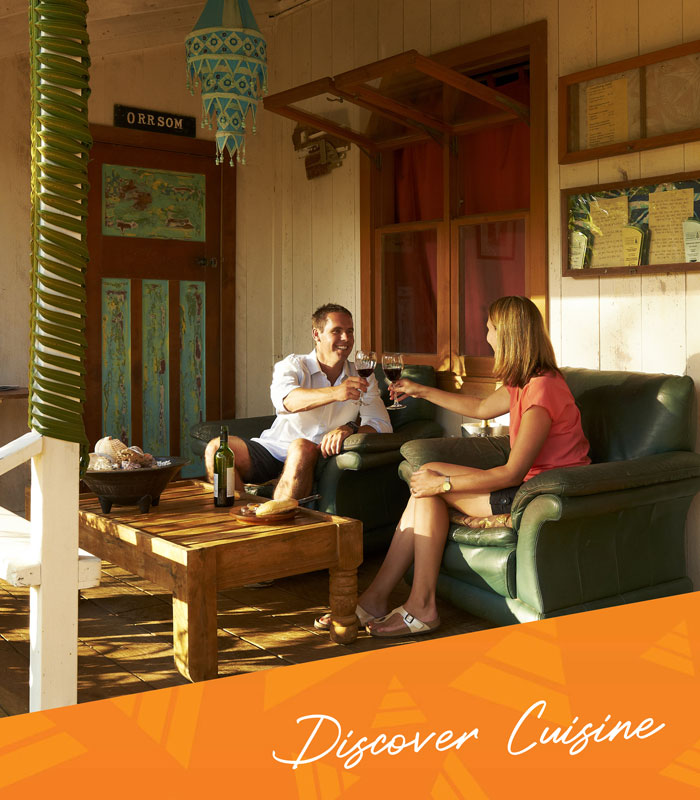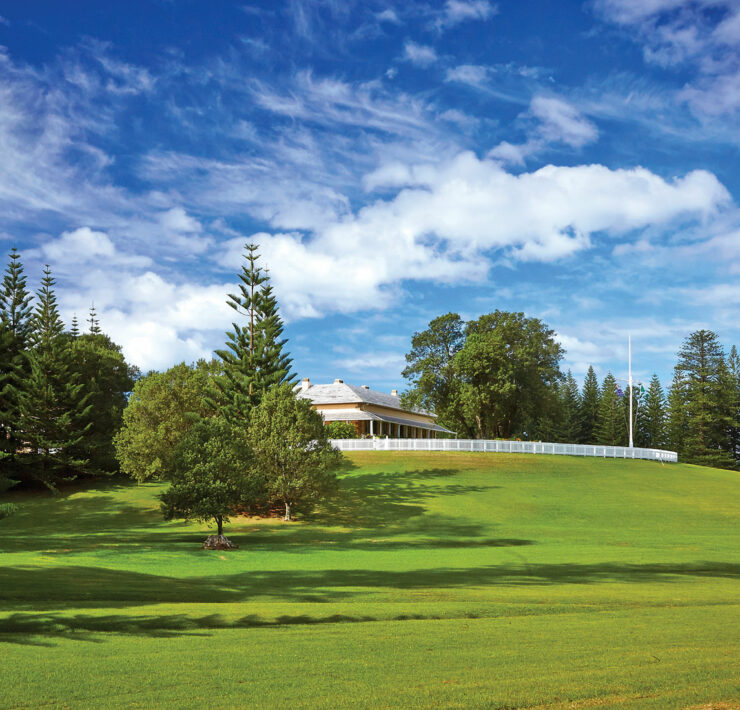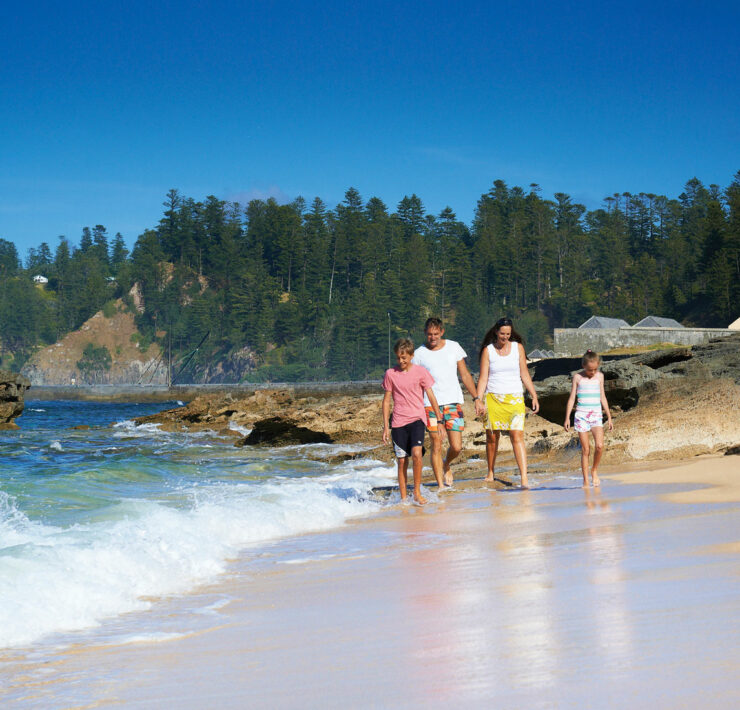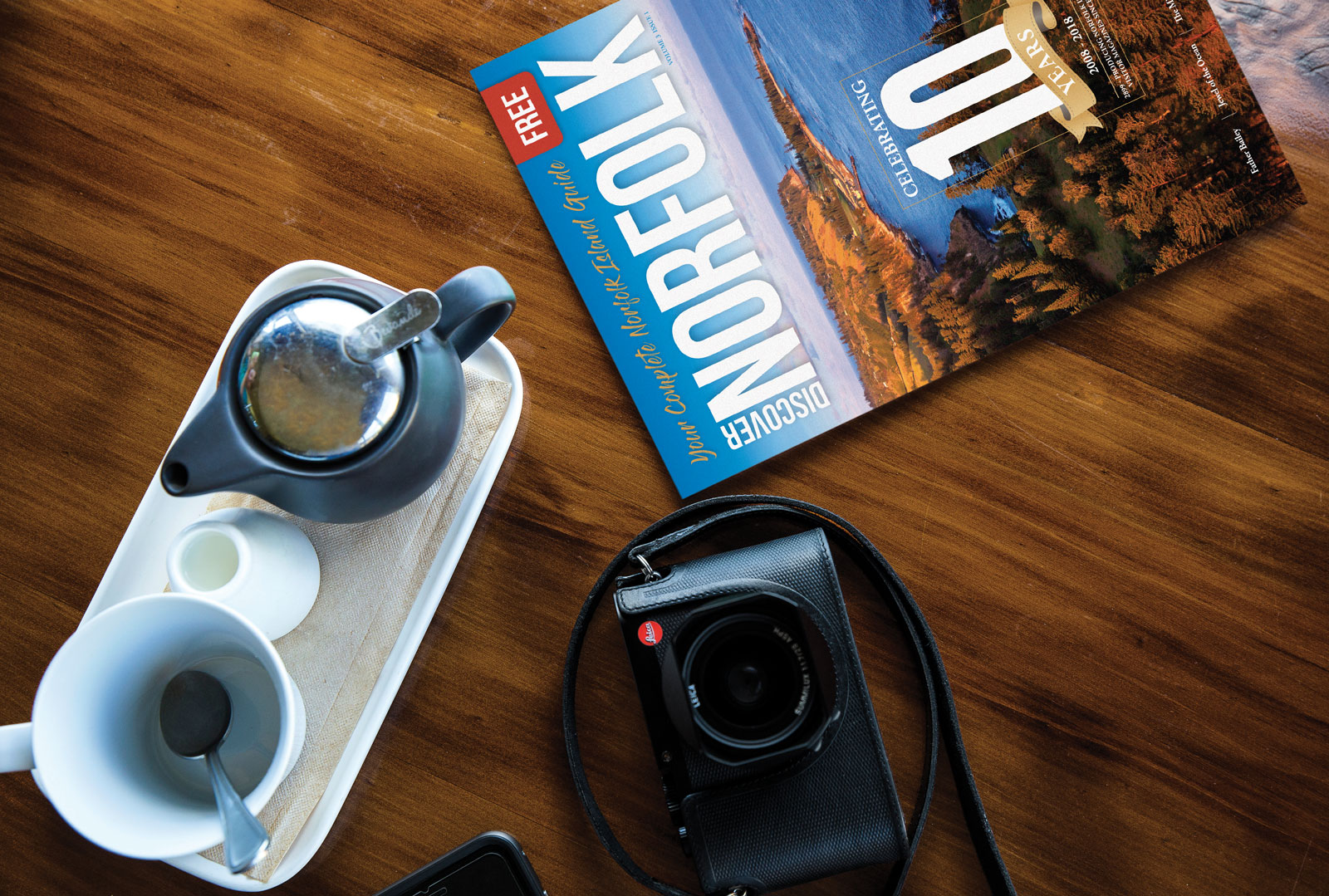Home » All Articles » Government House: A Living National Treasure
Government House: A Living National Treasure

Government House is situated on Dove’s Plot in the centre of Norfolk Island’s historic capital Kingston, with a commanding view over the town. Built in 1804 and rebuilt in 1828, it is Australasia’s oldest functioning vice-regal residence and the only one in a World Heritage area.
Visitors often see the island’s grandest building from afar, looking up and across its verdant domain to the ancient Georgian pile on a hill. Occasionally, some are lucky enough to be in town when an open day is held. They get to see inside the State Rooms, view the antiquities and artworks, experience the authentically restored Regency period interior decoration, and stroll in the gardens that are otherwise a private family retreat.
A large and substantial house
The house contains 25 rooms, set around 4 internal courtyards, with a verandah around 3 sides of the exterior and a cellar beneath. The floor plan reflects the classical symmetry of both Georgian country house architecture and the later extensions designed by the Royal Engineers. Built as a grand country manor in the early 1800s the house was transformed by the 1830s into a formidable redoubt able to withstand assault by rebellious convicts.
The oldest part of the house, which now contains the State Rooms, cellar and kitchen, was built over 1803-04 under the direction of Lt Governor Major Foveaux. A visiting soldier’s wife wrote in 1803 that ”It will be a large and substantial house, pleasantly situated on a gentle eminence, commanding a view of the Town of Sydney [now Kingston], Turtle Bay [now Emily Bay] and the Nepean and Phillip Islands.”
Barely a decade later and the town was burning. Acting under Governor Macquarie’s direct orders to abandon the island, on the 28th January 1814 the last few soldiers oversaw a gang of 30 convicts set the town ablaze. Government House was not spared from the great fire.
For a dozen years the stone walls and ruins shared the town with long grasses and wild pigs until 1825 and the return of soldiers of the 40th (Somersetshire) Regiment, along with some convicts and a guide. The defensive location of Government House was immediately recognised by the returning military and they built the first, temporary soldier’s barracks at the back of the House. In 1826 orders were given to ‘renovate’ the building and by 1829 it was ready for the arrival of Commandant Lt Colonel Morisset with his wife and family. The soldiers moved into their permanent barracks (now the Legislative Assembly building) a little later, and the Morissets became the first permanent residents of the house since 1814.
Over the next five years Morisset, who had served in Egypt and India, had the two rear courtyards built, the north court as servant’s quarters and the south court as a nursery and bedrooms for his growing family. A lengthy verandah was added to the main facades which, along with louvered windows, high walled courtyards, hidden passages and lofty ceilings, recalled for the soldiery the colonial bungalows and military command structures of British India.
The chatelaines of Government House
Mrs Emily Morisset was the third chatelaine of Government House. The first was the brief tenure of Ann Sherwin, the convict mistress of Foveaux, and their two young children in 1804. Next came Mary Ann Shears, the Norfolk Island-born daughter of convicts and mistress of Captain Piper, Lt Governor between 1804 and 1810. They had several children in the house, and later married in Sydney. Mrs Piper went on to become society hostess of “Henrietta Villa” at Point Piper, one of Sydney’s most fashionable homes in the 1820s, known for its luxurious decors and sumptuous entertainments.
Nothing is known of the earliest decoration of Government House, but Mrs Morisset’s contribution is better known and speaks of one of the traditional and expected roles of vice regal residences: patronage of good taste and authentic design. This is evident in arts and crafts such as interior decoration and cabinetmaking, and the conscious display of pieces that represented European ‘high culture’ and showed the success of the Empire in the south.
Detailed studies have shown the earliest interior decorative schemes reflected the tastes of the Regency period (1812-1830), and presumably also Mrs Morisset’s modish tastes. The 1829 colour schemes were those only recently at the height of their popularity in London, and this is especially evident in the simulated porphyry finishes in the entrance hall that mimicked those in the Prince Regent’s highly fashionable Royal Pavilion at Brighton, just completed in 1826. The décor of the State Rooms now reflect the late Regency period. The furnishings reflect the sequence of historical periods in its later occupation and form several discrete collections.
Fortified bungalow
Several pieces in the House date from the convict period. The seven metre long dining table is made of Australian cedar and was purchased in Sydney c1834 for the Officer’s Mess at the Barracks. Its surface is marked with initials and scratches reputedly scored by the officer’s swords. Also in the dining room is a copper Russian samovar c1830 that was taken from the House to Van Diemen’s Land in 1855 when the penal station was being closed down. The built-in six-door cupboard in the library dates from 1830. It was once part of a bookshelf-lined room, and contains a hidden doorway to the adjoining bedroom. The cupboard sits above the cellar stairs that, along with heavy iron-studded doors in the cellar may date from 1804.
Relative sophistication
Collections of furnishings from the late 19th century remind us of the Pitcairner period. When the Pitcairner’s arrived in 1856 Norfolk Island was governed as a separate colony under its own Governor, and Government House was specifically kept in Crown ownership. The emigrants landed on a wet and blustery day in June and some of the women were conducted into the jade drawing room and served hot tea. Mrs Sarah Nobbs later wrote “I was seated by a good fire in the Drawing room (I have learnt that name since), which was the first fire I had ever seen in a dwelling house.” The Pitcainers elected a Chief Magistrate each year, but he did not live in the House. Instead, it was usually occupied by a senior (sometimes the only) Crown officer on the island, used to accommodate visiting officials, and sometimes used as a venue for important community events. Its vice-regal status was not forgotten, and whenever a Governor of Norfolk Island (who was the same person as the Governor of NSW) was on island he and his retinue visited or stayed in the House.
The schoolmaster, public storekeeper and land registrar Thomas Rossiter and his family occupied the House between 1863 and 1870. In 1880 the Government Medical Officer Dr Metcalfe moved in until the mid-1880s. The contribution by Mrs Charlotte Rossiter and Mrs Janet Metcalfe (née Nobbs) to the decoration and presentation of the House is not known. However, the collections contain Pitcairner items such as a 1780s Spode plate with the mark of Edward Young, one of the Bounty mutineers, scratched on the back. An 1870s cedar chiffoniere in the breakfast room suggests the simpler, furnishings of the period that were still relatively sophisticated in a society largely isolated from the outside world.
The Residency
The administration of the island was returned to the NSW government in 1897, and the elective Chief Magistracy was replaced by an appointed Resident Magistrate (still commonly referred to as the Chief Magistrate). The first was Colonel Spalding, followed by Mr McArthur King, and then two Royal Navy officers, Captains Drake and Elliott. It was around this time that the House became known as The Residency.
The tenure of Mr McArthur King between 1899 and 1903 is perhaps best remembered because his daughter Sybil (who acted as chatelaine due to her mother’s illness) married local man Mr Brancker Nobbs. The Kings were direct descendants of Phillip Gidley King, first Lt Governor of Norfolk Island between 1788 and 1796. The King-Nobbs marriage symbolically united the convict and Pitcairner histories, and descendants of the couple still live on Norfolk and work in Kingston today. Captain Elliott’s six year term between 1907 and 1913 was marked by a number of conflicts with the local community, and culminated in the transfer of the island to Federal control in 1914.
Several pieces reflect this period such as a 1910s rosewood and satinwood inlay bonheur-du-jour or combined writing and sewing desk in the jade drawing room and the c1914 piano in the rose drawing room. The contributions of Mrs Spalding, Miss King, Mrs Drake and Mrs Elliott are little known.
Emblem of authority
On the 1st July 1914 Norfolk Island became Australia’s first external territory. A parliamentary visitor in 1915 remarked that Government House was the island’s ‘emblem of authority’.
During the later convict period the rose drawing room was used as the Commandant’s Office, and the Resident Magistrates also maintained their offices in the House. The new Commonwealth Administrators followed suite. The southern side of the south court housed the offices of the Administrator, his deputy and other officials. A verandah and separate entrance to the offices was built on the south side, keeping them separate from the State Rooms and the private residential areas.
The items in the collections reflecting this period include a 1937 print of the coronation of King George VI in the rose drawing room and a Sydney-made 1930s Manchurian oak table in the library.
Austral-Norfolk style
The arrival of Major General Sir Charles Rosenthal DSO as Administrator in 1937 and Lady Rosenthal heralded a period of stability. Rosenthal was a war hero, and architect and he remained in office until 1945, living on the island until 1948. He was interested in the history of the house and also the ruins of the convict period, about which he gave public talks on Norfolk and in Sydney and Hobart. He probably drew up the plan illustrating this story.
By the time self-government was returned to the island in 1979, the first restorations of the House under Administrators Dalkin (1968-1972) and then O’Leary (1976-1979) had been completed. Pieces in the collections illustrating the conscious restoration of historic character in this period include an c1850s cedar sideboard, reputedly a gift of the Rosenthals, and a set of three bird paintings presented in 1977 showing Norfolk Island species (Morpork Owl, Green Parrot and Silvereye).
Handcrafted neo-Regency
Furnishing the House became a major priority in the 1980s, to reflect the House’s 2nd penal settlement era (1825-1856), which was also the favoured period for restoring historic structures in Kingston.
A significant number of new pieces were commissioned in 1987-88 such as the 18 bar-backed dining chairs were made in 1987 in Sydney in a style to match the table. The use of local materials and artisans in furnishing the House has a long tradition. All of the floors and timber joinery, except some cedar doors, are Norfolk Island Pine from c1828, as are several pieces of furniture such as two carver chairs replicating a locally owned convict era chair made by local artisan Barry Boniface in 1988. Locally handcrafted quilts were added to the collections in 1989 and 2010.
Antique furnishings were also purchased around this time to evoke the 1830s-50s. The largest of these is the 1820s Honduras mahogany sideboard or ship’s dresser in the dining room that contains a lead-lined and partitioned drawer for keeping bottles steady while at sea, reflecting Kingston’s maritime history and its links to the global expansion of the British Empire.
The most recent phase in the House’s restoration is represented in the restored Regency colour schemes and décor. In 1998 a study, which involved detailed micro-studies of paint layers on walls and joinery, was made of the State Rooms, followed by a program of works to consciously recreate the 1830s interior colour schemes and soft furnishings.
Much of the current furnishing and artworks in the House were collected in the late 1980s. Although intended to mainly evoke the 1830s-50s era, enough pieces from the later 19th and early 20th centuries were gathered to give some sense of these other periods. The decorative scheme of paint colours and soft furnishings such as curtains are derived from detailed inspections of the walls and historical documents, as are the carpets and black japanning. They represent the most authentic restoration work in the House, recreating Mrs Morisset’s 1829 colour schemes and provide a perfect foil to the contents that span several periods.
Over the past 30 years, Government House has been resuming its traditional exemplary role, embracing its convict, Pitcairner and territorial histories. Its significance has been enhanced by the World Heritage Listing in 2010 that now makes it unique among living Government Houses. While several royal palaces have made it to this most prestigious of heritage lists, this is the first working vice regal residence to make the grade.
____
Image Credit: Robin Nisbet
www.robinnisbet.com
____
Article content disclaimer: Article first published in YourWorld, Volume 01 Issue 01, 2010. Please note that details of specific travel, accommodation and touring options may be outdated. References to people, places and businesses, including operating days and times may be have changed. References to Government structure and Government businesses/entities may no longer be applicable. Please check directly with businesses and/or Government websites directly rather than relying on any information contained in this article before you make travel arrangements.







